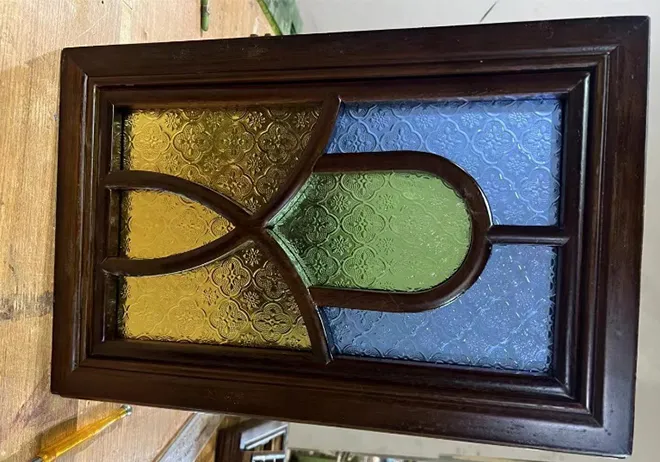Nov . 13, 2024 22:36 Back to list
tempered glass process
The Tempered Glass Process An Overview
Tempered glass, also known as toughened glass, is a type of safety glass that has been processed by controlled thermal or chemical treatments to increase its strength compared to standard glass. This process involves several specific steps that not only enhance the mechanical properties but also increase the thermal resistance of the glass, making it suitable for various applications such as windows, doors, and facades. In this article, we will explore the tempered glass process in detail, discussing the stages involved, the advantages it offers, and its applications in modern architecture and design.
The Tempering Process
The tempering process consists of heating the glass to a high temperature of around 620 to 700 degrees Celsius and then cooling it quickly through a process known as quenching. The steps involved in this process include
1. Cutting The first step involves cutting the glass sheets to the required dimensions according to design specifications. Precision at this stage is crucial as any defect can affect the final product.
2. Polishing and Cleaning After cutting, the edges of the glass are polished to remove sharp edges and cleansed to ensure any dust or particles are eliminated. This is necessary for both aesthetic and functional reasons, as impurities can affect the tempering process.
3. Heating The cleaned glass sheets are then transported to a tempering furnace, where they are slowly heated to the predetermined temperature. This heating phase is critical, as it prepares the glass for the subsequent rapid cooling and facilitates the redistribution of internal stresses.
4. Quenching Once the glass reaches the appropriate temperature, it is subjected to rapid cooling by blowing air onto its surface. This quenching process is what creates the internal stresses that significantly increase the strength of the glass.
5. Annealing After the quenching stage, the glass is allowed to gradually cool down to room temperature. This annealing step is vital in ensuring that the glass does not become overly stressed or develop flaws.
6. Quality Inspection Finally, once the glass has cooled, it undergoes a stringent quality inspection process. This might include checking for visual defects or conducting tests to ensure it meets safety and durability standards.
Advantages of Tempered Glass
The tempering process gives tempered glass a number of significant advantages over standard glass. These include
tempered glass process

- Increased Strength The primary advantage of tempered glass is its strength, which is up to five times greater than that of ordinary glass of the same thickness. This makes it suitable for high-stress applications.
- Thermal Resistance Tempered glass can withstand temperature fluctuations and thermal shock much better than regular glass. This is particularly important in situations where the glass may be exposed to extreme heat or cold.
- Safety Unlike regular glass, which can shatter into sharp shards, tempered glass breaks into small, blunt pieces when shattered, reducing the risk of injury
.- Flexibility Because of its strength and thermal resistance, tempered glass can be used in a variety of architectural designs and applications, from shower doors to skyscraper facades.
Applications in Modern Architecture
Tempered glass is widely used in modern architecture due to its many advantageous properties. Its applications span across commercial and residential sectors, including
- Windows Tempered glass is commonly used in windows where safety and thermal stability are important, allowing for expansive views without compromising strength.
- Glass Doors In both office buildings and homes, tempered glass doors provide an elegant aesthetic while ensuring safety.
- Balustrades Tempered glass is used in railings and balustrades for both functional and decorative purposes, providing security without obstructing views.
- Shower Enclosures The inherent safety features of tempered glass make it a popular choice for shower doors and enclosures.
- Facades In high-rise buildings, tempered glass is often used in facades not only for its structural integrity but also for aesthetic appeal.
In conclusion, the tempered glass process is a sophisticated method that transforms ordinary glass into a robust, versatile material ready to meet the demands of modern architecture and design. Its enhanced strength, thermal resistance, and safety features make it an essential choice for a plethora of applications, ultimately contributing to both functionality and aesthetic charm in our built environment.
-
Safety and Style with Premium Laminated Glass Solutions
NewsJun.24,2025
-
Reinvents Security with Premium Wired Glass
NewsJun.24,2025
-
Premium Float Glass Line for Modern Architecture
NewsJun.24,2025
-
Low Emissivity Glass for Energy-Efficient Architecture
NewsJun.24,2025
-
High-Performance Insulated Glass Solutions for Modern Architecture
NewsJun.24,2025
-
Elevates Interior Style with Premium Silver Mirror
NewsJun.24,2025
Related PRODUCTS














